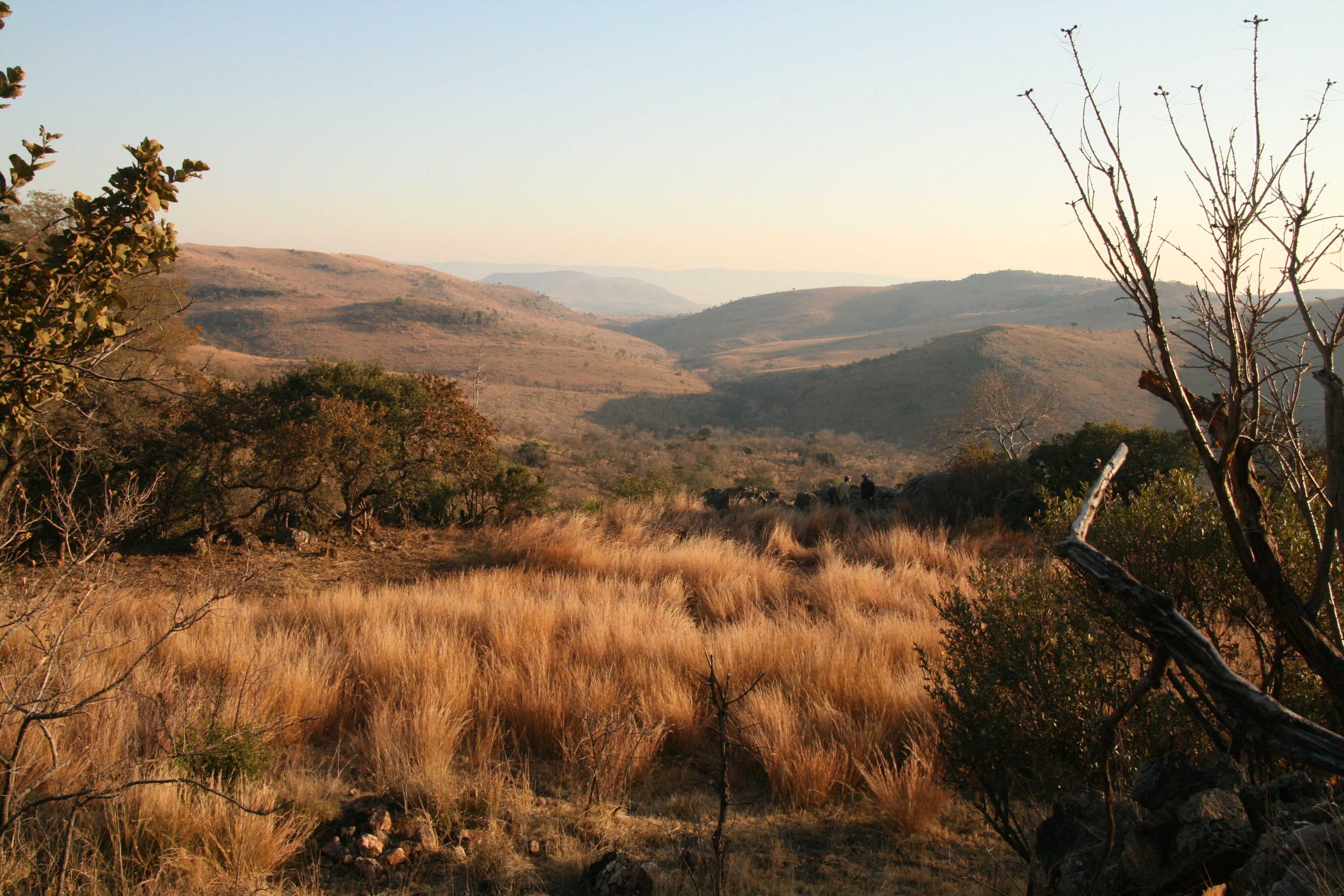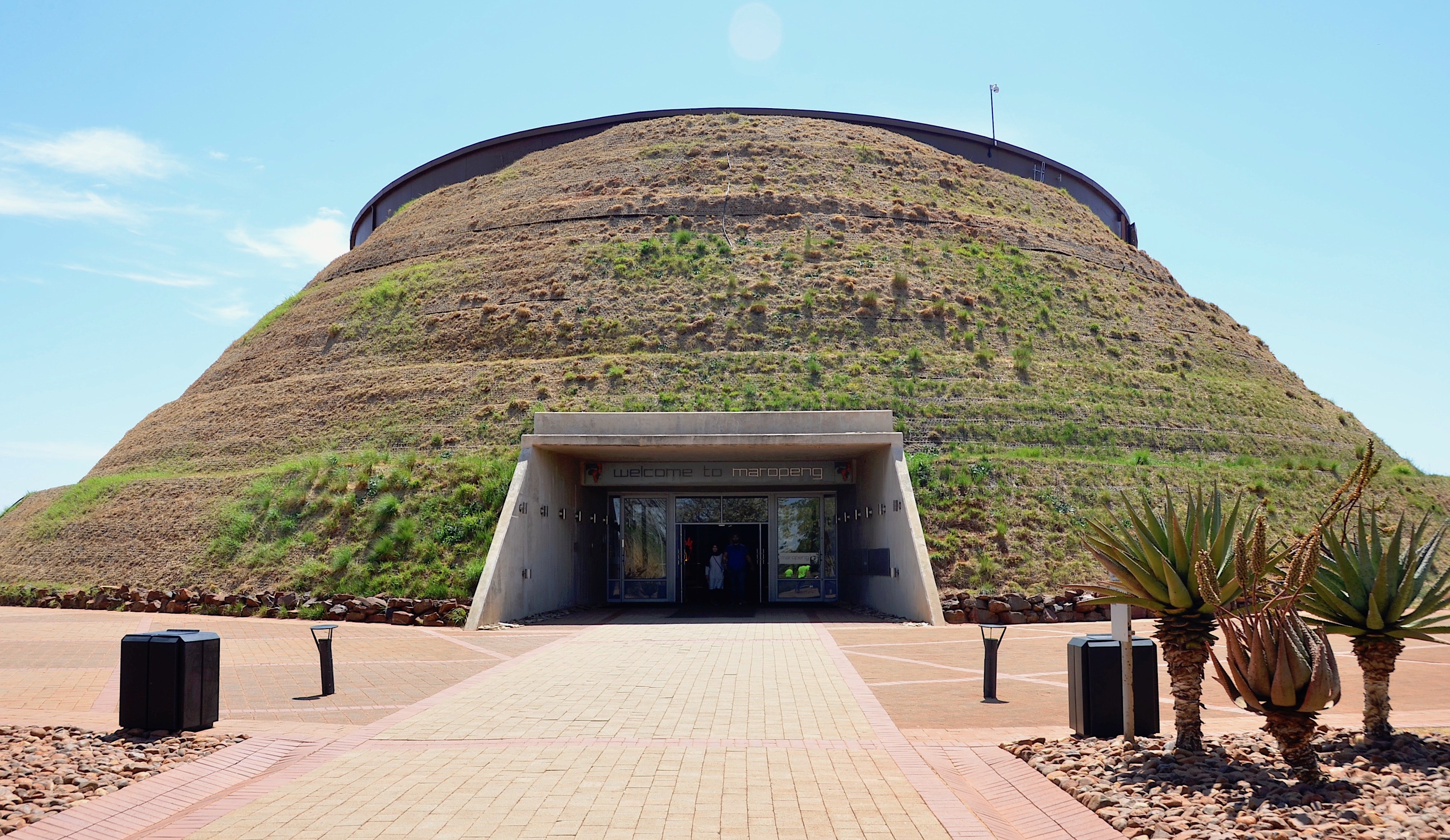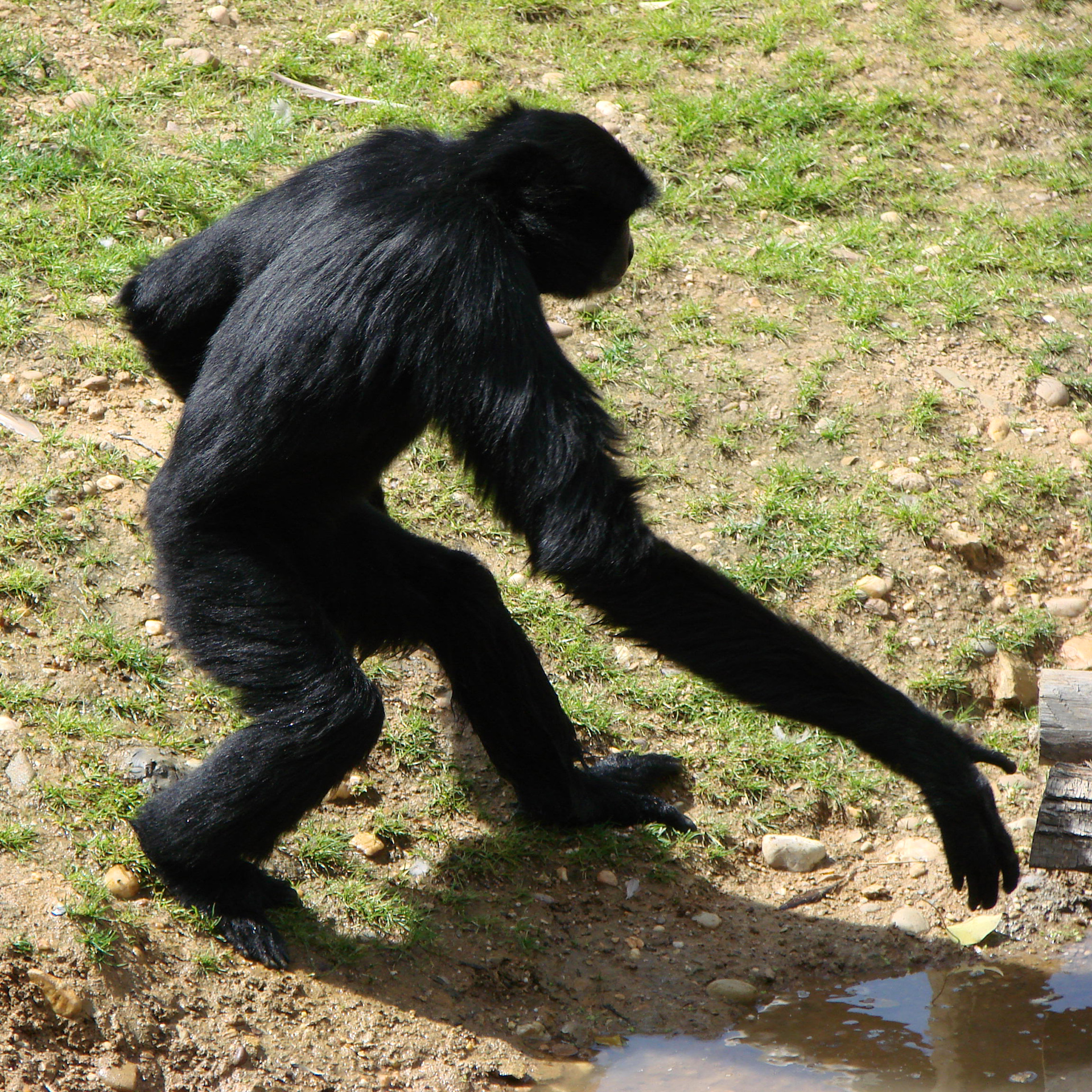|
Malapa
Malapa is a fossil-bearing cave located about northeast of the well known South African hominid-bearing sites of Sterkfontein and Swartkrans and about north-northwest of Johannesburg, South Africa. It is situated within the Cradle of Humankind World Heritage Site. History of investigations In March 2008, Lee Berger of the University of the Witwatersrand, South Africa, undertook an exploration project in the Cradle of Humankind World Heritage site outside of Johannesburg, in order to map the known caves identified by him and his colleagues over the past several decades, and to place known fossil sites onto Google Earth so that information could be shared with colleagues. The area is important as nearly a third of the entire evidence for human origins in Africa comes from just a few sites in this region, and the region is arguably one of the most explored areas in Africa for evidence of human origins, having been investigated continuously since the first discoveries were m ... [...More Info...] [...Related Items...] OR: [Wikipedia] [Google] [Baidu] |
Australopithecus Sediba
''Australopithecus sediba'' is an extinct species of australopithecine recovered from Malapa Cave, Cradle of Humankind, South Africa. It is known from a partial juvenile skeleton, the holotype MH1, and a partial adult female skeleton, the paratype MH2. They date to about 1.98 million years ago in the Early Pleistocene, and coexisted with ''Paranthropus robustus'' and '' Homo ergaster'' / ''Homo erectus''. Malapa is interpreted as having been a natural death trap, the base of a long vertical shaft which creatures could accidentally fall into. ''A. sediba'' was initially described as being a potential human ancestor, and perhaps the progenitor of ''Homo'', but this is contested and it could also represent a late-surviving population or sister species of '' A. africanus'' which had earlier inhabited the area. MH1 has a brain volume of about 420–440 cc, similar to other australopithecines. The face of MH1 is strikingly similar to ''Homo'' instead of other australopithecines, wit ... [...More Info...] [...Related Items...] OR: [Wikipedia] [Google] [Baidu] |
Malapa Fossil Site, August 2011 Site Of Discovery Of Australopithecus Sediba - View North
Malapa is a fossil-bearing cave located about northeast of the well known South African hominid-bearing sites of Sterkfontein and Swartkrans and about north-northwest of Johannesburg, South Africa. It is situated within the Cradle of Humankind World Heritage Site. History of investigations In March 2008, Lee Berger of the University of the Witwatersrand, South Africa, undertook an exploration project in the Cradle of Humankind World Heritage site outside of Johannesburg, in order to map the known caves identified by him and his colleagues over the past several decades, and to place known fossil sites onto Google Earth so that information could be shared with colleagues. The area is important as nearly a third of the entire evidence for human origins in Africa comes from just a few sites in this region, and the region is arguably one of the most explored areas in Africa for evidence of human origins, having been investigated continuously since the first discoveries were ... [...More Info...] [...Related Items...] OR: [Wikipedia] [Google] [Baidu] |
Matthew Berger
Lee Rogers Berger (born December 22, 1965) is an American-born South African paleoanthropologist and National Geographic Explorer-in-Residence. He is best known for his discovery of the '' Australopithecus sediba'' type site, Malapa; his leadership of Rising Star Expedition in the excavation of ''Homo naledi'' at Rising Star Cave; and the Taung Bird of Prey Hypothesis. Berger is known not only for his discoveries, but also for his unusually public persona in paleoanthropology, and for making his most notable discoveries open-access projects. He gives hundreds of talks per year, and has had a close relationship with National Geographic for many years, appearing in several of their shows and documentaries. Early life and education Berger was born in Shawnee Mission, Kansas in 1965, but was raised outside of Sylvania, Georgia in the United States. As a youth, Berger was active in the Boy Scouts, Future Farmers of America, and president of Georgia 4-H. In 1984, Berger was name ... [...More Info...] [...Related Items...] OR: [Wikipedia] [Google] [Baidu] |
Cradle Of Humankind
The Cradle of Humankind is a paleoanthropological site and is located about northwest of Johannesburg, South Africa, in the Gauteng province. Declared a World Heritage Site by UNESCO in 1999, the site is home to the largest concentration of human ancestral remains anywhere in the world. The site currently occupies and contains a complex system of limestone caves. The registered name of the site in the list of World Heritage Sites is '' Fossil Hominid Sites of South Africa''. According to the '' South African Journal of Science,'' Bolt's Farm is the place where the earliest primate was discovered. Bolt's Farm was heavily mined for speleothem (calcium carbonate from stalagmites, stalactites and flowstones) in the terminal 19th and early 20th centuries. The Sterkfontein Caves were the site of the discovery of a 2.3-million-year-old fossil '' Australopithecus africanus'' (nicknamed " Mrs. Ples"), found in 1947 by Robert Broom and John T. Robinson. The find helped corroborat ... [...More Info...] [...Related Items...] OR: [Wikipedia] [Google] [Baidu] |
South Africa
South Africa, officially the Republic of South Africa (RSA), is the Southern Africa, southernmost country in Africa. It is bounded to the south by of coastline that stretch along the Atlantic Ocean, South Atlantic and Indian Oceans; to the north by the neighbouring countries of Namibia, Botswana, and Zimbabwe; and to the east and northeast by Mozambique and Eswatini. It also completely Enclave and exclave, enclaves the country Lesotho. It is the southernmost country on the mainland of the Old World, and the List of countries and dependencies by population, second-most populous country located entirely south of the equator, after Tanzania. South Africa is a biodiversity hotspot, with unique biomes, plant and animal life. With over Demographics of South Africa, 60 million people, the country is the world's List of countries and dependencies by population, 24th-most populous nation and covers an area of . South Africa has three capital cities, with the executive, judicial and le ... [...More Info...] [...Related Items...] OR: [Wikipedia] [Google] [Baidu] |
Turkana Boy
Turkana Boy, also called Nariokotome Boy, is the name given to fossil KNM-WT 15000, a nearly complete skeleton of a ''Homo ergaster'' youth who lived 1.5 to 1.6 million years ago. This specimen is the most complete early hominin skeleton ever found. It was discovered in 1984 by Kamoya Kimeu on the bank of the Nariokotome River near Lake Turkana in Kenya. Estimates of the individual's age at death range from 7 to 11 years old. Adolescence and maturity Although the specimen is largely considered male due to the shape of the pelvis, the sex is ultimately indeterminate due to its prepubescent age. Estimates of the age at death depend on whether the maturity stage of the teeth or skeleton is used, and whether that maturity is compared to that of Homo sapiens or to chimpanzees. A key factor is that, while modern humans have a marked adolescent growth spurt, chimpanzees do not. While initial research assumed a modern human type of growth, more recent evidence from other fossils su ... [...More Info...] [...Related Items...] OR: [Wikipedia] [Google] [Baidu] |
Taung
Taung is a small town situated in the North West Province of South Africa. The name means ''place of the lion'' and was named after Tau, the King of the Barolong. ''Tau'' is the Tswana word for lion. Education High,Secondary and Middle Schools in Taung include: *PH Moeketsi Agricultural High School *Pinagare High School *Mankuroane Technical and Commercial Secondary School *Thabasikwa High School *Kgosietsile Lethola High School *Pudumong High School *Bogosing High School *Leshobo High School *Reekekathata Secondary School *Batlhaping High School *St Paul's High Schools *Mokgareng High Schools *Sekate Boijane Mahura High School *Maatla High School *Marubising High School *Thate Molatlhwa Secondary School *Gabodiwe High School *Choseng Secondary School *Joseph Saku Secondary School *Thakung High School *Jerry Secondary School *Walter Letsie High School *Kabinelang Secondary School *Mothelesi Secondary School *Reivilo High School *Seoleseng Secondary School *Gabobedi ... [...More Info...] [...Related Items...] OR: [Wikipedia] [Google] [Baidu] |
Homo Habilis
''Homo habilis'' ("handy man") is an extinct species of archaic human from the Early Pleistocene of East and South Africa about 2.31 million years ago to 1.65 million years ago (mya). Upon species description in 1964, ''H. habilis'' was highly contested, with many researchers recommending it be synonymised with ''Australopithecus africanus'', the only other early hominin known at the time, but ''H. habilis'' received more recognition as time went on and more relevant discoveries were made. By the 1980s, ''H. habilis'' was proposed to have been a human ancestor, directly evolving into ''Homo erectus'' which directly led to modern humans. This viewpoint is now debated. Several specimens with insecure species identification were assigned to ''H. habilis'', leading to arguments for splitting, namely into "''H. rudolfensis''" and "'' H. gautengensis''" of which only the former has received wide support. Like contemporary ''Homo'', ''H. habilis'' brain size generally varied from . Th ... [...More Info...] [...Related Items...] OR: [Wikipedia] [Google] [Baidu] |
Homo Erectus
''Homo erectus'' (; meaning "upright man") is an extinct species of archaic human from the Pleistocene, with its earliest occurrence about 2 million years ago. Several human species, such as '' H. heidelbergensis'' and '' H. antecessor'' — with the former generally considered to have been the ancestor to Neanderthals, Denisovans, and modern humans — appear to have evolved from ''H. erectus''. Its specimens are among the first recognizable members of the genus ''Homo''. ''H. erectus'' was the first human ancestor to spread throughout Eurasia, with a continental range extending from the Iberian Peninsula to Java. Asian populations of ''H. erectus'' may be ancestral to '' H. floresiensis'' and possibly to '' H. luzonensis''. The last known population of ''H. erectus'' is '' H. e. soloensis'' from Java, around 117,000–108,000 years ago. ''H. erectus'' had a more modern gait and body proportions, and was the first human species ... [...More Info...] [...Related Items...] OR: [Wikipedia] [Google] [Baidu] |
Gauteng
Gauteng ( ) is one of the nine provinces of South Africa. The name in Sotho-Tswana languages means 'place of gold'. Situated on the Highveld, Gauteng is the smallest province by land area in South Africa. Although Gauteng accounts for only 1.5% of the country's land area, it is home to more than a quarter of its population (26%). Highly urbanised, the province contains the country's largest city, Johannesburg, which is also one of the largest cities in the world. Gauteng is the wealthiest province in South Africa and is considered as the financial hub of not only South Africa but the entire African continent, mostly concentrated in Johannesburg. It also contains the administrative capital, Pretoria, and other large areas such as Midrand, Vanderbijlpark, Ekurhuleni and the affluent Sandton. Gauteng is the most populous province in South Africa with a population of approximately 16.1 million people according to mid year 2022 estimates. Etymology The name ''Gauteng'' is derived ... [...More Info...] [...Related Items...] OR: [Wikipedia] [Google] [Baidu] |
Java Man
Java Man (''Homo erectus erectus'', formerly also ''Anthropopithecus erectus'', ''Pithecanthropus erectus'') is an early human fossil discovered in 1891 and 1892 on the island of Java (Dutch East Indies, now part of Indonesia). Estimated to be between 700,000 and 2,000,000 years old, it was, at the time of its discovery, the oldest hominid fossils ever found, and it remains the type specimen for ''Homo erectus''. Led by Eugène Dubois, the excavation team uncovered a tooth, a skullcap, and a thighbone at Trinil on the banks of the Solo River in East Java. Arguing that the fossils represented the " missing link" between apes and humans, Dubois gave the species the scientific name ''Anthropopithecus erectus'', then later renamed it ''Pithecanthropus erectus''. The fossil aroused much controversy. Less than ten years after 1891, almost eighty books or articles had been published on Dubois's finds. Despite Dubois's argument, few accepted that Java Man was a transitional form between ... [...More Info...] [...Related Items...] OR: [Wikipedia] [Google] [Baidu] |
Australopithecus Africanus
''Australopithecus africanus'' is an extinct species of australopithecine which lived between about 3.3 and 2.1 million years ago in the Late Pliocene to Early Pleistocene of South Africa. The species has been recovered from Taung, Sterkfontein, Makapansgat, and Gladysvale. The first specimen, the Taung child, was described by anatomist Raymond Dart in 1924, and was the first early hominin found. However, its closer relations to humans than to other apes would not become widely accepted until the middle of the century because most had believed humans evolved outside of Africa. It is unclear how ''A. africanus'' relates to other hominins, being variously placed as ancestral to ''Homo'' and '' Paranthropus'', to just ''Paranthropus'', or to just '' P. robustus''. The specimen " Little Foot" is the most completely preserved early hominin, with 90% of the skeleton intact, and the oldest South African australopith. However, it is controversially suggested that it and similar spe ... [...More Info...] [...Related Items...] OR: [Wikipedia] [Google] [Baidu] |

.jpg)





